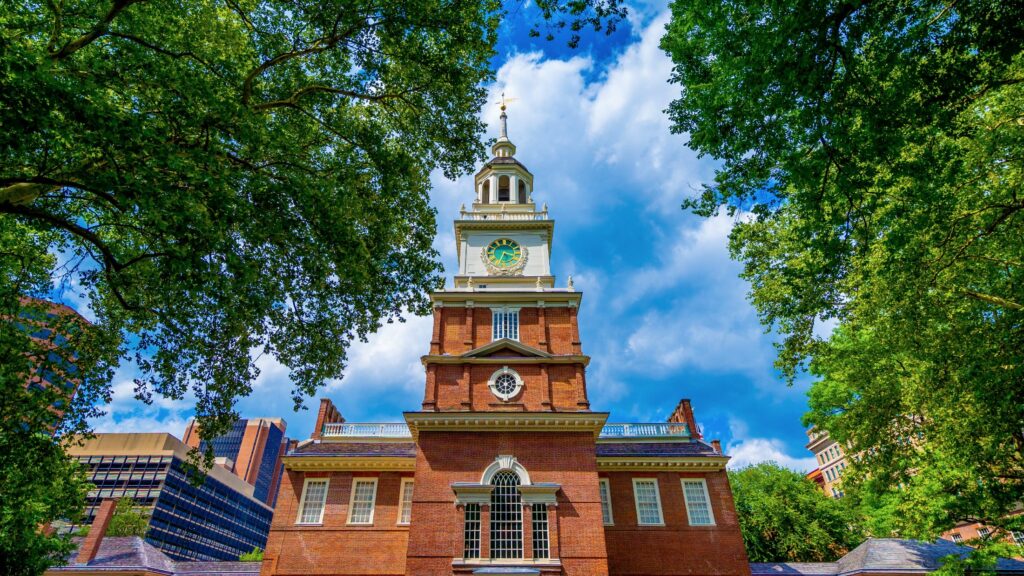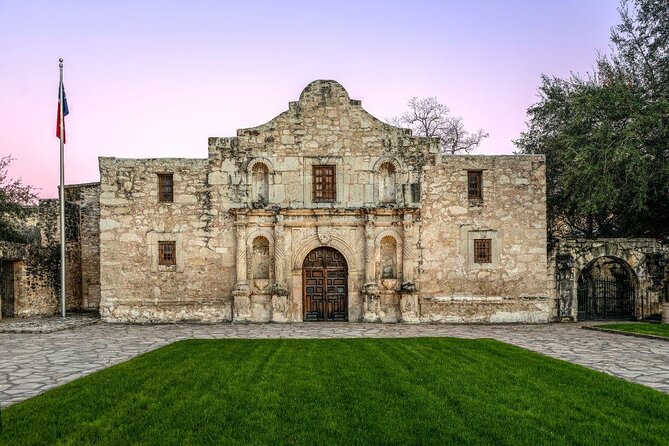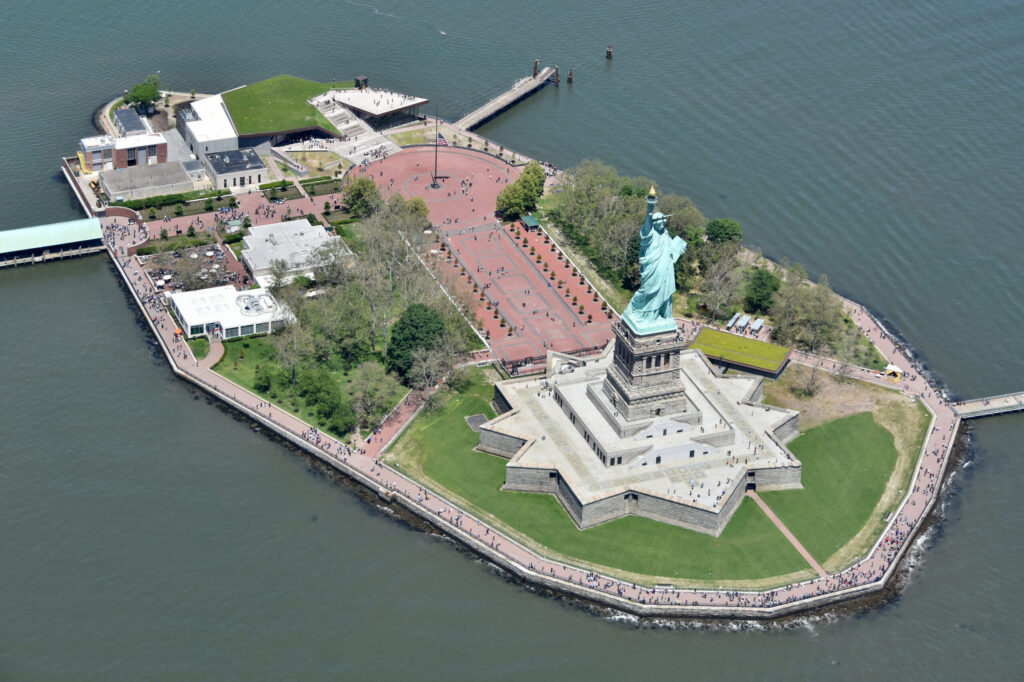Table of Contents
Introduction
National Historic Landmarks (NHLs) are more than just physical remnants of the past; they are tangible links to the events, people, and cultural developments that have shaped the United States. Designated by the Secretary of the Interior through the National Park Service, these sites represent the pinnacle of historical significance in the country. While many people are familiar with renowned landmarks like the Statue of Liberty or Independence Hall, there exists a plethora of lesser-known sites that offer equally compelling insights into America’s rich and diverse history.
Definition and Significance of National Historic Landmarks
National Historic Landmarks (NHLs) are distinguished as buildings, sites, districts, structures, and objects that hold exceptional Historical Tour significance in the United States. Designated by the Secretary of the Interior through the National Park Service (NPS), these landmarks represent the pinnacle of American heritage, showcasing critical moments, influential people, and pivotal cultural developments that have shaped the nation’s history.
Overview of the National Historic Landmarks Program
The National Historic Landmarks program, established in 1960, aims to recognize and preserve places of extraordinary historical value. The program’s core objectives are:
- Identification and Designation:
- NHLs are identified through a rigorous process involving historians, scholars, and NPS officials. Sites can be nominated by the public, state historic preservation offices, federal agencies, or the NPS itself. The evaluation process ensures that only those sites of exceptional significance receive the designation.
- Criteria for Designation:
- To qualify as an NHL, a site must possess exceptional value or quality in illustrating or interpreting the heritage of the United States. The criteria for designation include:
- Association with significant historical events.
- Connection to the lives of significant persons in American history.
- Architectural significance or representation of a significant architectural style or construction technique.
- Potential to yield important information in history or prehistory through archaeological investigation.
- To qualify as an NHL, a site must possess exceptional value or quality in illustrating or interpreting the heritage of the United States. The criteria for designation include:
- Protection and Preservation:
- Once designated, NHLs receive a measure of protection and are eligible for technical assistance and grants to aid in preservation. This helps ensure that these invaluable historical assets are maintained for future generations to study and enjoy.
- Educational and Cultural Impact:
- NHLs serve as educational resources, offering the public opportunities to learn about different aspects of American history. They help foster a deeper understanding of the nation’s past, promoting awareness and appreciation of diverse historical narratives.
- Economic Contributions:
- The preservation and promotion of NHLs often boost local economies through tourism. Visitors drawn to these landmarks contribute to local businesses and services, creating jobs and stimulating investment in community development.
The NHL program is crucial for safeguarding the physical remnants of America’s history, ensuring that significant sites are recognized, preserved, and accessible to the public. These landmarks encapsulate the rich tapestry of the nation’s past, reflecting its diverse cultural heritage and historical milestones. By protecting and promoting these sites, the NHL program helps maintain the integrity of the American historical narrative and enriches the cultural fabric of the country.
The Statue of Liberty

The Statue of Liberty, one of America’s most iconic landmarks, symbolizes freedom, democracy, and the enduring spirit of the United States. Officially named “Liberty Enlightening the World,” this colossal sculpture stands proudly on Liberty Island in New York Harbor, welcoming millions of visitors each year.
History and Significance
The Statue of Liberty, officially named “Liberty Enlightening the World,” is a monumental symbol of freedom and democracy located on Liberty Island in New York Harbor. The statue was a gift from France to the United States, designed by French sculptor Frédéric Auguste Bartholdi and built with the engineering expertise of Gustave Eiffel.
- Origins and Construction:
- The statue was conceived as a way to commemorate the centennial of American independence and celebrate the enduring friendship between France and the United States. Its construction began in France in 1875 and was completed in 1884. The statue was disassembled and shipped to the United States in 1885, where it was reassembled and dedicated on October 28, 1886.
- Symbolism:
- The Statue of Liberty stands 305 feet tall from the base to the tip of the torch and holds profound symbolic meaning. The figure represents Libertas, the Roman goddess of freedom. She holds a torch aloft in her right hand and a tablet inscribed with “JULY IV MDCCLXXVI” (July 4, 1776) in her left hand, signifying the date of American independence.
- The statue’s broken chains at her feet symbolize liberation from oppression and tyranny. Her seven rays crown represent the seven continents and seven seas, embodying the universal message of liberty and democracy.
- Cultural Impact:
- The Statue of Liberty has served as a welcoming beacon for millions of immigrants arriving in the United States, particularly during the late 19th and early 20th centuries when Ellis Island was the main entry point for newcomers.
- Over time, the statue has become an international symbol of freedom and democracy, reflecting the values of equality and justice. It has also been a focal point for various social and political movements, representing the pursuit of liberty and human rights.
Visitor Experience
- Access and Attractions:
- Visitors to the Statue of Liberty can explore Liberty Island, which offers scenic views of New York Harbor and the Manhattan skyline. The island is accessible by ferry from Battery Park in Manhattan or Liberty State Park in New Jersey.
- The Statue of Liberty Museum, located on Liberty Island, provides exhibits and interactive displays that detail the statue’s history, significance, and the process of its creation. The museum also features the original torch, offering a unique glimpse into the statue’s past.
- Experiences and Tours:
- Visitors can access various levels of the statue, including the pedestal and the crown. The pedestal offers panoramic views of the harbor and the city, while the crown provides a more elevated perspective and a sense of the statue’s grandeur.
- Guided tours and audio guides are available to enhance the visitor experience, providing in-depth information about the statue’s history, design, and cultural impact. Special programs and educational activities are also offered to engage visitors of all ages.
- Cultural Programs and Events:
- The National Park Service, which manages the monument, organizes special events and ceremonies throughout the year to celebrate the statue’s legacy and its role in American history. These events include commemorations of significant anniversaries, cultural festivals, and educational workshops.
- The statue’s significance is also highlighted through annual celebrations such as Independence Day and the Statue of Liberty’s dedication anniversary, which attract visitors from around the world.
The Statue of Liberty remains a powerful symbol of freedom and democracy, and its visitor experience is designed to reflect and honor its profound significance. The landmark continues to inspire and educate people from diverse backgrounds, reinforcing the values of liberty and human rights that define the American spirit.
Independence Hall

Independence Hall, located in Philadelphia, Pennsylvania, is a landmark of profound historical significance, serving as the birthplace of both the Declaration of Independence and the United States Constitution. Constructed between 1753 and 1756, this Georgian-style building originally served as the Pennsylvania State House and was the venue for the Second Continental Congress from 1775 to 1783. It was within these walls that, on July 4, 1776, the Continental Congress adopted the Declaration of Independence, marking the formal assertion of the American colonies’ sovereignty. Later, in 1787, Independence Hall was the site of the Constitutional Convention, where delegates drafted the U.S. Constitution, laying the foundation for the federal government. The building’s historic significance extends beyond its role in these pivotal events; it symbolizes the ideals of democracy and freedom that are central to American identity. Today, Independence Hall is preserved as part of the Independence National Historical Park and continues to attract visitors from around the world, serving as a powerful reminder of the nation’s revolutionary origins and democratic principles.
Role in American History
Independence Hall is a cornerstone of American history, renowned for its pivotal role in the founding of the United States. Constructed between 1753 and 1756, this historic building was initially the Pennsylvania State House. It gained national prominence as the meeting place of the Second Continental Congress from 1775 to 1783, where key events that shaped the nation’s future unfolded. On July 4, 1776, within these walls, the Continental Congress adopted the Declaration of Independence, officially proclaiming the American colonies’ separation from British rule. This momentous decision marked the birth of the United States as an independent nation.
The significance of Independence Hall continued into the post-Revolutionary era. In 1787, it was the site of the Constitutional Convention, where delegates from the states convened to draft the U.S. Constitution. This foundational document established the framework for the federal government and the principles of democracy and governance that underpin the American political system. Independence Hall thus stands as a symbol of the revolutionary ideals and democratic values that define the United States, making it a revered site of American heritage and history.
Architectural Features
Independence Hall is celebrated not only for its historical importance but also for its distinctive architectural style. The building exemplifies Georgian architecture, characterized by its symmetrical façade, brick construction, and classical detailing. Key architectural features include:
- Facade and Structure:
- The hall’s symmetrical design is highlighted by its red brick exterior, which is complemented by white-painted woodwork. The building is three stories high, with a central clock tower that was a prominent feature in the 18th century.
- Bell Tower:
- The bell tower, originally housing the State House Bell (now known as the Liberty Bell), is an iconic feature of Independence Hall. The bell was used to mark important public events and became a symbol of American independence after its crack during the reading of the Declaration of Independence.
- Interior Design:
- The interior of Independence Hall includes the Assembly Room, where the Declaration of Independence and the U.S. Constitution were debated and adopted. The room features high, coffered ceilings, large windows, and a central raised platform for the president of the Continental Congress. The room’s simple yet elegant design reflects the practical needs of its time while maintaining a sense of grandeur befitting its historical significance.
- Courtroom and Council Chamber:
- The building also contains other notable rooms, such as the Courtroom and the Council Chamber, which played important roles in the legislative and judicial functions of colonial Pennsylvania. These rooms have been preserved to reflect their historical use, providing visitors with a glimpse into the daily operations of the government during the 18th century.
Independence Hall’s architectural features, combined with its role in pivotal moments of American history, make it a quintessential symbol of the nation’s early democratic ideals and a treasured site of national heritage.
The Alamo

The Alamo, located in San Antonio, Texas, is a historic site renowned for its pivotal role in the Texas Revolution. Originally built in the early 18th century as a Spanish mission, the structure was later converted into a military outpost. Its most significant moment came during the Battle of the Alamo in March 1836, when a small group of Texan defenders, including notable figures such as James Bowie, William B. Travis, and Davy Crockett, bravely resisted a much larger Mexican force led by General Antonio López de Santa Anna. The siege, though ultimately resulting in the fall of the Alamo, became a rallying cry for Texan independence with the famous slogan, “Remember the Alamo!” Today, the Alamo stands as a symbol of heroism and sacrifice, preserving the memory of those who fought for Texas’ independence and serving as a major historical landmark and tourist attraction. Its preserved mission chapel and surrounding grounds offer visitors a glimpse into the site’s storied past and its enduring legacy in American history.
Importance in Texas History
The Alamo holds a central place in Texas history as a symbol of resistance and the fight for independence. Originally established as a Spanish mission in the early 18th century, it later served as a military fort. Its most renowned chapter unfolded during the Texas Revolution in 1836, when the Alamo became the site of a pivotal battle. The siege of the Alamo, which took place from February 23 to March 6, 1836, saw a small group of Texan defenders, including famous figures like James Bowie, William B. Travis, and Davy Crockett, face off against the much larger Mexican army led by General Antonio López de Santa Anna. Despite their valiant defense, the Alamo fell, but the courage and determination of the defenders became a powerful symbol of Texan resolve. The battle galvanized Texan forces, leading to their victory in the subsequent Battle of San Jacinto and the eventual independence of the Republic of Texas. The Alamo’s role in this struggle for freedom makes it a cornerstone of Texas’s historical identity and a monument to the state’s fight for self-determination.
Cultural Significance
Culturally, the Alamo represents a powerful symbol of bravery, sacrifice, and the spirit of independence. The site has transcended its historical events to become an emblem of Texan pride and American frontier spirit. Its legacy is reflected in numerous ways:
- Symbol of Courage:
- The phrase “Remember the Alamo!” became a rallying cry for Texan forces and a symbol of steadfast resistance against overwhelming odds. This spirit of defiance and commitment to a cause resonates deeply in Texas culture and American history.
- Cultural Icon:
- The Alamo has been immortalized in literature, film, and folklore, contributing to its status as a cultural icon. Its story has been depicted in various artistic forms, including movies, books, and songs, reinforcing its place in the American collective memory.
- Tourism and Education:
- Today, the Alamo is a major historical site and tourist attraction, drawing visitors from around the world who come to learn about its rich history and experience its enduring legacy. The site includes the preserved mission chapel, museum exhibits, and educational programs that highlight its historical and cultural significance.
- Historical Preservation:
- The preservation of the Alamo and its surrounding grounds reflects a broader commitment to honoring and maintaining important historical sites. Its continued preservation ensures that the story of the Alamo and its impact on Texas history and culture is accessible to future generations.
The Alamo’s importance in Texas history and its cultural significance extend far beyond its historical events, embodying values of heroism and determination that continue to inspire and resonate with people today.
Mount Vernon

Mount Vernon, located on the banks of the Potomac River in Virginia, is the historic estate of George Washington, the first President of the United States. This beautifully preserved 18th-century plantation served as Washington’s home from 1754 until his death in 1799. The estate encompasses the Mansion, with its iconic portico and elegantly appointed rooms, as well as extensive gardens and outbuildings, including a working farm. Mount Vernon is of profound historical significance as it provides a personal glimpse into the life of one of America’s founding fathers and his contributions to the nation. The estate is also a testament to Washington’s legacy, showcasing his achievements as a leader, farmer, and innovator. Today, Mount Vernon is a major historical site and museum, attracting visitors from around the world who come to explore its rich history, learn about Washington’s life, and appreciate the enduring impact of his leadership on the United States.
George Washington’s Estate
Mount Vernon, situated along the Potomac River in Virginia, was the cherished home of George Washington, the first President of the United States. Acquired by Washington in 1754, the estate spans over 500 acres and includes the main Mansion, which was expanded and renovated by Washington throughout his lifetime. The Mansion, with its distinctive portico and elegant interiors, served as the backdrop for Washington’s personal life and his role as a prominent figure in American history. Beyond the Mansion, the estate features meticulously maintained gardens, a working farm, and various outbuildings, such as the kitchen, slave quarters, and stables. Mount Vernon reflects Washington’s interests in agriculture, architecture, and estate management, offering a comprehensive view of his life and contributions. The estate is a living history site, showcasing the blend of personal and public aspects of Washington’s life and providing insight into the domestic and professional aspects of his legacy.
Preservation Efforts
Preserving Mount Vernon has been a priority since George Washington’s death in 1799, ensuring that the estate remains a testament to his legacy and a valuable historical resource. The Mount Vernon Ladies’ Association, founded in 1853, has played a crucial role in the preservation and maintenance of the estate. This organization, composed of women dedicated to saving Washington’s home, purchased Mount Vernon from the Washington family heirs and embarked on extensive restoration efforts to maintain its historical integrity.
Preservation efforts include:
- Restoration and Maintenance:
- The Mansion and its surroundings have undergone careful restoration to preserve their original appearance and historical significance. This includes maintaining the architectural features, furnishings, and decorative elements that reflect the 18th-century era.
- Conservation of Artifacts:
- The estate houses a vast collection of artifacts, including personal items, documents, and portraits related to Washington. These items are meticulously conserved and displayed in the estate’s museum to educate visitors and honor Washington’s legacy.
- Educational Programs:
- Mount Vernon offers a variety of educational programs and exhibits that highlight the historical significance of the estate and the life of George Washington. These programs are designed to engage visitors and provide a deeper understanding of Washington’s impact on American history.
- Historical Research:
- Ongoing research and scholarship contribute to the accurate representation of Washington’s life and the historical context of Mount Vernon. This research supports informed restoration practices and educational content.
- Public Engagement:
- Mount Vernon actively engages with the public through events, tours, and interactive exhibits. These initiatives help raise awareness about the estate’s history and ensure its continued relevance to contemporary audiences.
Through these comprehensive preservation efforts, Mount Vernon remains a well-preserved historical site that continues to honor George Washington’s legacy and provide valuable insights into his life and contributions to the United States.
Golden Gate Bridge

The Golden Gate Bridge, an engineering marvel spanning the Golden Gate Strait in San Francisco, California, is one of the most iconic structures in the world. Opened in 1937, this suspension bridge connects San Francisco to Marin County and has become a symbol of innovation and resilience. With its striking International Orange color and towering Art Deco design, the bridge is renowned for its aesthetic appeal as well as its functional significance. At the time of its completion, it was the longest and tallest suspension bridge in the world, showcasing advancements in engineering and construction techniques. The Golden Gate Bridge not only serves as a crucial transportation link but also stands as a cultural and architectural landmark, attracting millions of visitors each year who come to admire its grandeur and panoramic views of the San Francisco Bay. Its enduring presence continues to inspire awe and serves as a testament to the ingenuity and vision of its creators.
Engineering Marvel
The Golden Gate Bridge is celebrated as an engineering marvel, showcasing the ingenuity and technical prowess of early 20th-century construction. Spanning approximately 1.7 miles across the Golden Gate Strait, it was the longest and tallest suspension bridge in the world at the time of its completion in 1937. Designed by chief engineer Joseph Strauss and a team of experts, including consulting engineers Leon Moisseiff and Charles Alton Ellis, the bridge overcame significant challenges such as strong ocean currents, deep waters, and high winds. Its construction required innovative techniques and materials, including the use of a unique mix of steel and concrete to support its immense span. The bridge’s main span measures 4,200 feet, and its towers rise 746 feet above the water, making them taller than the Washington Monument. The bridge’s ability to withstand seismic activity, high winds, and heavy traffic is a testament to its advanced engineering design and enduring structural integrity.
Iconic Status
The Golden Gate Bridge has achieved iconic status as one of the most recognizable landmarks in the world. Its striking International Orange color, chosen for visibility in foggy conditions, contrasts vividly with the often misty backdrop of the San Francisco Bay, creating a visually stunning landmark. The bridge’s elegant Art Deco design and sweeping suspension cables contribute to its aesthetic appeal and architectural significance. Beyond its functional role as a crucial transportation link between San Francisco and Marin County, the Golden Gate Bridge has become a symbol of American engineering excellence and a cultural touchstone. It is frequently featured in films, photographs, and artworks, cementing its place in popular culture. The bridge attracts millions of visitors annually who come to experience its breathtaking views and capture its iconic image, underscoring its enduring status as a symbol of innovation, beauty, and human achievement.
Monticello

Monticello, the historic plantation designed and home to Thomas Jefferson, the third President of the United States, is a testament to both architectural innovation and historical legacy. Located in Charlottesville, Virginia, this neoclassical estate was constructed over a period of more than 40 years, reflecting Jefferson’s vision and intellectual pursuits. The design of Monticello is renowned for its distinctive, elegant features, including a domed rotunda and symmetrical facades that embody Jefferson’s appreciation for classical architecture. The estate also reflects Jefferson’s interests in horticulture and agricultural experimentation, with its meticulously designed gardens and innovative farming techniques. Monticello was not only Jefferson’s personal residence but also a symbol of his ideals and accomplishments, blending his philosophical, architectural, and agricultural pursuits into a cohesive whole. Today, Monticello stands as a National Historic Landmark and museum, offering visitors a glimpse into Jefferson’s life and the complex history of early American democracy, while also preserving his contributions to architecture and the landscape.
Thomas Jefferson’s Home
Monticello, situated in the rolling hills of Charlottesville, Virginia, is the lifelong home of Thomas Jefferson, the third President of the United States and a key architect of American democracy. Jefferson began designing and building Monticello in 1769, and the estate remained a work in progress throughout his life. It served as his primary residence and a reflection of his personal and philosophical values. The estate encompasses over 5,000 acres and includes the main house, extensive gardens, and a variety of outbuildings. Monticello is significant not only as Jefferson’s home but also as a symbol of his intellectual and artistic pursuits, embodying his vision of an idealized agrarian society. The estate provides insight into Jefferson’s life and his contributions to the fields of architecture, horticulture, and early American governance.
Architectural Highlights
Monticello is renowned for its architectural innovation and aesthetic beauty, showcasing Thomas Jefferson’s deep appreciation for classical design and his inventive spirit. Key architectural highlights include:
- The Rotunda:
- Central to Monticello’s design is the Rotunda, inspired by the Pantheon in Rome. This domed structure features a skylight that floods the interior with natural light, creating a dramatic and spacious central area. The Rotunda reflects Jefferson’s admiration for classical architecture and his desire to integrate these principles into his home.
- Symmetrical Design:
- The main house of Monticello is characterized by its symmetry and balanced proportions. Jefferson employed a strict adherence to classical orders, evident in the harmonious arrangement of the facade and the strategic placement of windows and doors.
- Innovative Use of Space:
- Jefferson’s design for Monticello includes inventive use of space and structural elements. For example, the use of concealed storage and multifunctional rooms demonstrates his emphasis on practical efficiency and aesthetic elegance. The architectural design also incorporates advanced construction techniques for its time, including a complex system of ventilation and natural lighting.
- Exterior Features:
- The exterior of Monticello is marked by its distinctive portico, supported by four Ionic columns, and a series of elaborate brickwork and plaster details. The estate’s setting on a mountaintop provides panoramic views of the surrounding landscape, enhancing its visual impact and integration with the natural environment.
- Gardens and Outbuildings:
- Jefferson’s meticulous planning extended beyond the main house to the surrounding gardens and outbuildings. The ornamental gardens showcase his knowledge of botany and design, while structures like the plantation’s kitchen, stables, and wine cellar reflect his commitment to functionality and aesthetic harmony.
Monticello’s architectural features not only highlight Jefferson’s skills as a designer but also represent his broader vision of integrating classical ideals with practical living. The estate continues to be a celebrated example of early American architecture and a testament to Jefferson’s enduring legacy.
Pearl Harbor

Pearl Harbor, located on the island of Oahu in Hawaii, is a site of profound historical significance due to the surprise military attack that took place on December 7, 1941. This attack, carried out by the Imperial Japanese Navy, led to the United States’ entry into World War II. On that fateful day, Japanese forces launched a coordinated assault on the U.S. Pacific Fleet stationed at Pearl Harbor, resulting in the destruction of numerous battleships, including the USS Arizona, and the loss of over 2,400 American lives. The attack dramatically shifted American public opinion and led to President Franklin D. Roosevelt’s declaration of war against Japan the following day. Today, Pearl Harbor is preserved as a national historic site, with the USS Arizona Memorial and the Pearl Harbor Visitor Center serving as poignant reminders of the events of December 7, 1941. The site offers visitors insight into the impact of the attack, the bravery of those who served, and the broader context of World War II.
WWII History
Pearl Harbor is a pivotal site in World War II history, marking the moment that propelled the United States into global conflict. On December 7, 1941, the Imperial Japanese Navy launched a surprise attack on the U.S. naval base at Pearl Harbor, Hawaii. This assault targeted the U.S. Pacific Fleet and airfields, resulting in the destruction of eight battleships, three cruisers, and nearly 200 aircraft. The attack caused over 2,400 American casualties and inflicted significant damage on the military infrastructure. The following day, President Franklin D. Roosevelt addressed Congress, famously declaring December 7th “a date which will live in infamy” and calling for a declaration of war against Japan. This event marked a turning point in World War II, as the United States mobilized its vast resources and entered the war, significantly influencing the course of global conflict and contributing to the eventual defeat of the Axis powers.
Memorial Significance
The memorials at Pearl Harbor serve as solemn tributes to the lives lost and the enduring legacy of the attack. The most prominent of these is the USS Arizona Memorial, which spans the sunken remains of the USS Arizona, a battleship that was tragically sunk during the attack. Dedicated in 1962, the memorial is a striking white structure that straddles the sunken ship, offering visitors a poignant view of the wreckage and a place for reflection. The memorial honors the more than 1,100 crew members who perished on the Arizona and stands as a symbol of the broader sacrifice made by those affected by the attack.
The Pearl Harbor Visitor Center complements the memorial with extensive exhibits and educational programs, providing context and historical background on the events of December 7, 1941. The center includes displays of artifacts, personal stories, and multimedia presentations that illustrate the impact of the attack on both the immediate aftermath and the broader scope of World War II.
Together, the USS Arizona Memorial and the Pearl Harbor Visitor Center preserve the memory of those who served and died at Pearl Harbor, offering visitors a deeper understanding of the significance of the attack and its place in world history. These sites serve as powerful reminders of the cost of war and the importance of peace and remembrance.
Ellis Island

Ellis Island, situated in New York Harbor, stands as a historic symbol of America’s immigrant experience and the gateway to a new life for millions of newcomers. Opening its doors as an immigration station in 1892, Ellis Island processed over 12 million immigrants arriving in the United States until it closed in 1954. This small island became the primary entry point for immigrants seeking opportunities and a fresh start in America, with many enduring rigorous health inspections and legal processing. The island’s facilities included a hospital, dormitories, and various administrative offices, which together formed a bustling center of activity during the peak years of immigration. Today, Ellis Island is home to the Ellis Island National Museum of Immigration, which preserves and interprets the stories of the diverse individuals who passed through its doors. The museum’s exhibits, archives, and interactive displays offer a poignant reflection on the immigrant journey and the significant role Ellis Island played in shaping America’s cultural and demographic landscape.
Immigration History
Ellis Island holds a central place in American immigration history, serving as the entry point for millions of immigrants seeking a new life in the United States from 1892 to 1954. Situated in New York Harbor, this small island was transformed into a bustling immigration processing center at the turn of the 20th century. During its peak years, Ellis Island processed up to 5,000 immigrants a day, each undergoing medical and legal inspections. Immigrants from diverse backgrounds—Europeans fleeing poverty or persecution, Asians seeking opportunities, and many others—passed through its doors, contributing to the rich tapestry of American society. The experiences of these immigrants, many of whom faced rigorous examinations and long waits, are a testament to the challenges and hopes associated with the pursuit of a new beginning in America. Ellis Island’s role in the immigration story reflects the broader themes of aspiration, resilience, and the search for freedom that define the immigrant experience.
Museum and Exhibits
The Ellis Island National Museum of Immigration, located within the restored Main Building of the former immigration station, serves as a profound tribute to the immigrant experience and the island’s historical significance. The museum’s exhibits provide a comprehensive look at the lives of those who passed through Ellis Island and the broader impact of immigration on American society.
- Exhibit Collections:
- The museum features a diverse range of artifacts, photographs, and personal stories that illustrate the immigrant journey. Exhibits include historical documents, original baggage, and personal items that offer insights into the experiences of those who arrived seeking a new life.
- Interactive Displays:
- Interactive exhibits and multimedia presentations engage visitors with the history of Ellis Island and the immigrant experience. These displays allow visitors to explore personal narratives, view historic film footage, and participate in interactive activities that bring the past to life.
- Archives and Genealogy:
- The American Immigrant Wall of Honor and the Ellis Island Archives are integral parts of the museum. The Wall of Honor commemorates immigrants and their contributions to the United States, while the Archives offer resources for those researching their family histories, including ship manifests and immigration records.
- Educational Programs:
- The museum provides educational programs and guided tours that enhance visitors’ understanding of the immigration process and its significance. These programs are designed for students, educators, and the general public, offering deeper insights into the historical and cultural impact of Ellis Island.
The Ellis Island National Museum of Immigration preserves and celebrates the legacy of Ellis Island and its role in shaping the American immigrant experience. Through its exhibits and educational initiatives, the museum provides a valuable resource for understanding the diverse and enduring contributions of immigrants to American society.
Conclusion
National Historic Landmarks across America embody the rich tapestry of the nation’s history, capturing moments of profound significance and architectural innovation. From the enduring legacy of Independence Hall, where the foundations of American democracy were laid, to the iconic Golden Gate Bridge, a testament to engineering excellence, each landmark offers a unique glimpse into the past. Sites like Monticello and the Alamo reflect the personal stories and pivotal events that have shaped the American experience, while Ellis Island stands as a powerful symbol of immigration and the pursuit of a new beginning.
These landmarks not only preserve the physical remnants of history but also serve as educational resources, offering insights into the lives and aspirations of those who came before us. Through preservation efforts and ongoing public engagement, these sites ensure that the lessons and legacies of history remain accessible and relevant for future generations. As we visit and reflect on these historic places, we honor the values, struggles, and achievements that have defined the nation’s journey and continue to inspire us today.
Reflection on the Diversity of NHLs
National Historic Landmarks (NHLs) offer a diverse and multifaceted view of American history, reflecting the rich tapestry of the nation’s past. These landmarks span a wide range of historical periods, architectural styles, and cultural contexts, from the early days of American independence at Independence Hall to the engineering triumphs of the Golden Gate Bridge. Each NHL tells a unique story, whether it be the personal legacy of Thomas Jefferson at Monticello, the symbolic significance of the Alamo in Texas history, or the immigrant experience embodied by Ellis Island. This diversity highlights the complexity of America’s history, showcasing the contributions and experiences of various individuals, communities, and innovations that have shaped the country. By exploring these landmarks, we gain a deeper understanding of the multifaceted nature of American identity and heritage.
Importance of Preserving American History
Preserving American history through National Historic Landmarks is crucial for maintaining a tangible connection to the past and fostering a deeper appreciation of the nation’s heritage. These landmarks serve as physical reminders of significant events, achievements, and cultural developments that have influenced the course of history. They offer valuable educational opportunities, allowing people to engage with history in meaningful ways and to reflect on the progress and challenges faced by previous generations. Preservation efforts ensure that these historical sites remain intact and accessible, enabling future generations to learn from and be inspired by their legacy. By safeguarding American history, we honor the contributions of those who came before us and reinforce our collective identity, values, and aspirations.
